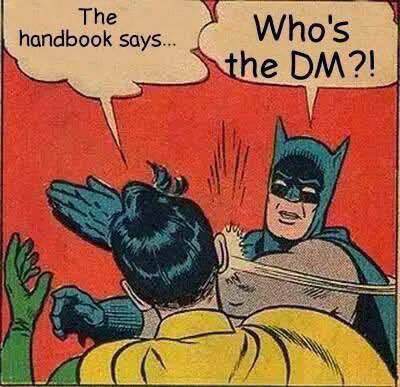In episode ten of the podcast I posited that AD&D 1e [Affiliate Link] invites rules lawyering. While the AD&D core books brought together rules, classes, and monsters introduced in the supplements and issues of Dragon Magazine since the original game did organize a lot, it was still not truly organized.
Some of the issues are:
- Contradictions between the Player’s Handbook [Affiliate Link] and the Dungeon Master’s Guide [Affiliate Link] .
- Similar rules are not grouped in proximity, especially in the DMG.
- Instead of using an existing system, or developing a coherent engine to the game, there is a new system for many new things.
- For example, the difference between regular combat and grappling is very confusing.
- Too many fiddly bits.
How to address it:
I have a love and nostalgia for AD&D. I even like some of the fiddly bits. But as a player and GM both then and now, rules lawyering interrupts the flow of the game and kills the mood. For me to run AD&D as a campaign, I need a more comprehensive document that clarifies three things:
- What rules are not used at all, such as weapon speed.
- What rules are modified, morale by the book is a mass of number crunching. Simple is better to keep the flow.
- Modification can vary from a simple modification or clarification to replacement by another method whether from another game or home brewed.
- What rules are used as is, like turn undead.
If you clarify that your game is rulings over rules, then those who can’t stand anything but RAW (Rules As Written) will look elsewhere for a game to join.
Conclusion
Being on the same page about what rules are used and how they are implemented during play will enhance the experience at the table. Be open to revision of rules based on how things work at the table. Be consistent, and most of all have fun! Remember it’s a game!


